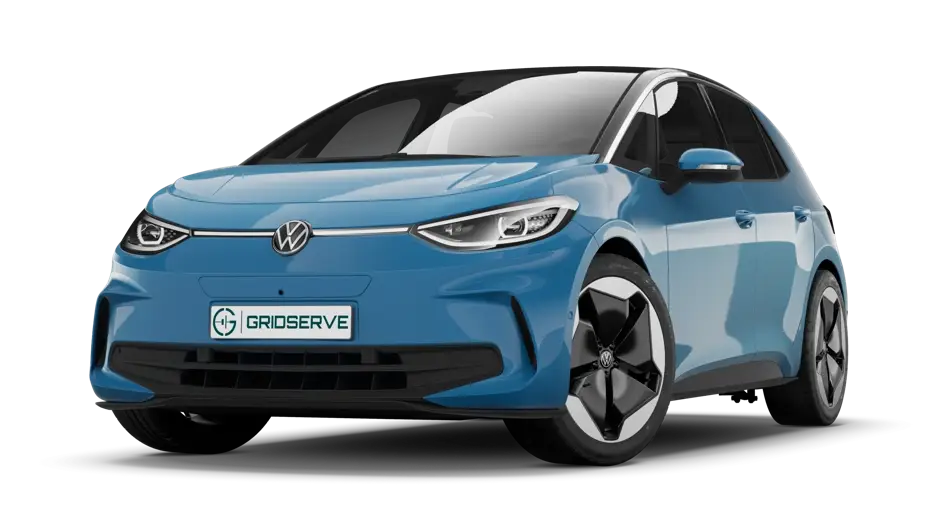Volkswagen ID.3: General information, Body. Joining and separating techniques
- Drilling
- Saw-cutting
- Grinding
- Milling
- Separating bonded joints
- Pulling out rivets which are only accessible from one side
- Resistance spot welding
- Plug welding, shielding gas
- Continuous seam and stepped seam welding - shielding gas
- MIG brazing
- Aluminium welding
- Solid rivet
- Pop rivet
- Incorrect riveting
- Punched rivets
- Overview of riveting attachments
- Flow-drill screws
- Making a flow-drill screw connection, pre-drilled hole in upper part
- Making a flow-drill screw connection, no pre-drilled hole in upper part
- Making a flow-drill screw connection, exchanging upper and lower parts
- Renewing friction-element-welded joints
Drilling
Drilling
Drilling is used to detach resistance spot welds and rivets. When drilling, make sure that no components located behind the relevant area are damaged. When detaching welded joints with two and more layers, the sheet metal remaining on the vehicle must not be weakened. Thoroughly remove swarf from cavities after drilling by vacuuming.
Protect magnetic components from swarf.
Saw-cutting
Saw-cutting
Thoroughly remove swarf from cavities after saw-cutting by vacuuming.
Protect magnetic components from swarf
Short-stroke pneumatic saw:
♦ Fast cutting process.
♦ Sawing radii is possible.
♦ Can also be used for sharply bent profiles.
Oscillating saw
♦ Precise, straight cuts.
♦ Low penetration depth, thus particularly suitable for double-layer sheet metal panels.
Grinding
Grinding
Grinding can be an alternative to drilling especially for detaching hight-strength welded joints. Spot welds, laser-welded joints or brazed seams can be detached through grinding. But make sure that the material located behind the relevant area is not weakened or damaged.
Protect magnetic components from swarf.
♦ Due to flying sparks, extensive measures for protecting vehicle and surrounding are required.
♦ Higher temperatures than during drilling processes, thus more damage to remaining material and corrosion protection.
Milling
Milling
For body repairs, a difference is made between ball-nose cutter -A- and BTR cutter -B-.
Ball-nose cutters are used, if BTR cutters cannot be used for detaching spot welds due to the spatial conditions.
When working with BTR cutter, be careful to keep the cutting edges straight in the high-strength steel. The hardened cutting edges can break very easily. Always work with a suitable tool (not a hand drill).
Protect magnetic components from swarf
.webp)
Separating bonded joints
Separating bonded joints
Bonded joints of the vehicle body can be detached by applying heat.
♦ Wear protective gloves and safety goggles.
♦ Avoid direct skin contact with adhesives.
♦ Avoid inhaling solvent vapours.
♦ Use adhesives only in well-ventilated rooms.
♦ Hazard warnings of the manufacturer must be observed.
♦ In addition, the applicable accident prevention regulations for each country must be adhered to.
♦ Observe the corresponding material safety data sheets of the adhesives.
Pulling out rivets which are only accessible from one side
Pulling out rivets which are only accessible from one side
♦ Remove paint and oxide layer from rivet head and clamping point for earth clamps.
♦ Fit earth clamps as close as possible to the rivets.
♦ Weld stud onto rivet.
♦ Use weld stud to pull out rivet.
.webp)
Resistance spot welding
Resistance spot welding
When welding is carried out as a body repair measure, the basic principle is to restore the original welded joint as closely as possible.
Important
● For body repair work, access to the welding points is different. Thus, a complete set of the most common electrode types must be available.
● Observe the operating instructions and setting notes of the welding unit manufacturer.
To restore the original welded joints, the following requirements must be met:
♦ The positions of the original weld spots must be transferred to the new part.
♦ The panels to be welded must overlap.
♦ The welding point is accessible to the electrodes from both sides.
♦ It must be possible to place the electrodes at right angles.
♦ The performance of the spot welding unit is sufficient to produce the factory-made spot weld diameter.
RP welding of galvanised panels
When spot welding galvanised panels, consider the following:
♦ Avoid surface spatter, i.e. spatter on the electrode side.
♦ Avoid melted-through spot welds.
♦ Avoid surface cracks.
♦ The flanges to be spot-welded must be in contact.
♦ It may be necessary to use grips to tension the flanges, which is particularly important for high-strength panels, since the electrode force would not be sufficient otherwise.
♦
♦ Do not position the welding gun immediately adjacent to the grips as a major part of the welding current flows off due to shunting.
♦ For small weld spot distances, weld the spots in a row or first fix every third spot, and then weld the remaining ones. This reduces the influence due to shunting.
♦ If a spot weld is faulty, a new spot weld can be set at the greatest possible distance (20 mm).
Spot weld shear testing
♦ Determine the required spot weld shear diameter of the panel combination via the setting parameters for the panel thickness on the welding unit, and verify them on samples.
♦ High-quality spot welds never tear out in the contact plane, but shear off.
Calculating shear-off diameter -d-:
♦ √d = T1 × 3.5 × 1.15
T1 is the thinnest panel of a panel combination, e.g. panel combination of 1.5 mm and 0.8 mm. Sample calculation: square root of 0.8 × 3.5 × 1.15 = 3.6 mm as spot weld shear diameter. Here, the narrow welded test strip is rolled off or torn off the second panel strip, whereas the force is applied vertically to the panel surface.
.webp)
Plug welding, shielding gas
Plug welding, shielding gas
SG plug welding is used when production resistance spot welds cannot be restored (e.g. due to limited accessibility).
♦ Detach spot welds using a spot weld cutter, or remove them by grinding.
♦ Remove damaged part.
♦ Grind off protrusions.
♦ Adapt new part.
♦ Drill/punch upper panel for plug welding (for the hole diameter refer to the vehicle-specific body repair workshop manual).
♦ Clean flanges, and remove oxide layer.
♦ Perform plug welding from the middle working outwards.
Continuous seam and stepped seam welding - shielding gas
Continuous seam and stepped seam welding - shielding gas
SG continuous seam or stepped seam welding are used for joining butt-type or overlapping cutting points. Due to the very high welding temperatures and the resulting modified properties of modern materials, the area of application for this joining process is more and more restricted. Note vehicle-specific body repair workshop manual for this.
MIG brazing
MIG brazing
MIG brazing mainly differs from SG continuous seam and stepped seam welding through the considerably lower temperatures.
MIG brazing
♦ A brazing technique also called metal inert gas welding.
♦ The inert gas does not actively participate in the processes between the electric arc and the welding filler metal.
♦ Argon or helium mixed with carbon dioxide or oxygen are among the used shielding gas types.
♦ The base material (body panel) is not melted, the solder wets the edges and connects the components.
Advantages of MIG brazing:
♦ Reduced material distortion.
♦ Only minor structural modification in the components.
♦ Less impairment of the corrosion protection established during production
♦ Preservation of zinc coating on the components.
Aluminium welding
Aluminium welding
The manufacturer and the after-sales service apply metal inert gas welding (MIG).
Argon is used as shielding gas.
♦ Remove underseal and paint from parts prior to welding.
♦ Then, use a stainless steel brush to remove the oxide layer over a width of approx. 40 mm on both sides.
♦ To avoid the formation of cracks, always draw weld seams around profile corners.
Put backing plate underneath:
♦ The backing plate -C- is produced from the remainders of the new part -B- or the old part -A-. The backing plate must also be put underneath joggled panel edges. For small cross-sections or large panel edges, the backing plate is separated.
♦ Chamfer both panels by 45°. Round off outer edge (radius = -R3-) and chamfer inner edge.
♦ The panel tips must have a distance of 3 to 4 mm to each other.
.webp)
Solid rivet
Solid rivet
Important
● For all work, adjust the riveting tool to the respective material thickness. Insert staples into the punched holes to prevent the flanges from opening up after punching.
Opening solid rivet
♦ Perform separating cuts, as necessary.
♦ Grind off clinched head, and use riveting tool to push out solid rivet.
♦ Remove damaged part. Use a chisel for separating if necessary.
Inserting solid rivet
.webp)
♦ Adapt new parts, apply adhesive, position new part on body, and fix it in position.
♦ Use the riveting tool to punch the flanges.
♦ During the punching process, perforation and embossing are done in a single step.
.webp)
♦ Insert solid rivet and make clinched head using riveting tool.
♦ The riveting tool is equipped with the corresponding inserts for the different rivet diameters.
.webp)
Pop rivet
Pop rivet
Opening pop rivet
Important
● Collect any pop rivet residues. If residues fall into the cavities and cannot be removed any more, they must be embedded in cavity wax.
♦ Perform separating cuts first, as necessary.
♦ Drill out pop rivet, drilling diameter: 4.5 mm.
♦ Remove damaged part. Use a chisel for separating if necessary.
Inserting pop rivet
Important
● For all work, adjust the riveting tool to the respective material thickness. During embossing, the diameter increases to 4.8 mm. The embossing must face inwards on all parts.
● Embossing of extruded profiles is not possible. Countersink the new part with the extruded profile, remove the new part and drill out extruded profile to Ø 4.8 mm.
.webp)
Various pop rivets are available.
♦ Adapt new parts, position new part on body, and fix it in position.
♦ Drill new and old part or backing plate in one step, Ø 2.5 mm.
♦ Remove new parts.
♦ Use the riveting tool to emboss the drilled holes in all parts.
♦ Applying adhesive
♦ Insert pop rivet and use the riveting tool to pull pin.
.webp)
Incorrect riveting
Incorrect riveting
Open chamfers
♦ Open chamfers all around are not permitted. Partially open chamfers up to a gap width of 0.04 mm are admissible.
♦ Reclinching, e.g. with embossed snap die, is admissible if the tolerances for clinch and rivet head are met.
Non-contacting rivet heads
.webp)
♦ Loose rivets are generally not permitted.
♦ A partial gap up to 0.05 mm is admissible.
Bulging at riveted joint
.webp)
♦ When riveting, the rivet material is pressed into the gap thus causing a bending stress of the rivet.
♦ Bulging of this type is not admissible.
Bulging between riveted joints
.webp)
♦ Bulges must not exceed a gap width of 0.3 mm.
Shear cracks
.webp)
♦ Cracks which do not overlap are admissible (above).
Notches
.webp)
♦ The admissible notch depth is 1/4 × head height -k-.
Rings
.webp)
♦ Rings in the clinched head result from using a snap die that is too small.
♦ The admissible ring depth is 1/4 × head height -k-.
♦ Ring formation all around is not permitted.
Offset clinched head
.webp)
♦ An offset clinched head is not permitted as soon as the clinched head is in contact with the shaft circle and the rivet hole is visible.
.webp)
Punched rivets
Punched rivets
Important
● Stainless steel rivets must not be drilled out or ground due to the risk of corrosion.
Riveting procedure (from left to right)
♦ Fitting rivet
♦ Pressing in
♦ Forming and punching
♦ Finished punch rivet joint
.webp)
Overview of riveting attachments
Overview of riveting attachments
The listed pairs only serve as a guideline. Refer to the provided operating instructions for a description of the work procedure and areas of application.
Important
● To extend the service life of the snap dies, use a commercially available cutting fluid.
♦ D 1 + D 2 – Pressing out Ø 3.2 mm punch rivet
♦ D 2 + D 3 – Pressing out Ø 3.2 mm punch rivet
♦ D 2 + D 5 – Pressing out Ø 5 mm punch rivet
♦ D 3 + D 5 – Pressing out Ø 5 mm punch rivet
♦ D 4 + D 5 – Pressing out Ø 5 mm punch rivet
♦ D 5 + D 12 – Hole punching Ø 8 mm hole for welded joint
♦ D 6 + D 7 – Hole stamp for Ø 4.8 mm pop rivet
♦ D 8 + D 8 – Bending panel back into its original shape
♦ D 8 + D 9 – Hole stamp for Ø 4 mm solid rivet
♦ D 8 + D 9 – Hole punching and stamping for Ø 4 mm solid rivets
♦ D 13 + D 14 – Pressing out Ø 5.3 × 7.5 mm punch rivet
♦ D 17 + D 17 – Bending panel back into its original shape
♦ D 15 + D 16 – Hole stamp for Ø 6.0 mm solid rivet
♦ D 17 + D 17 – Hole stamp for Ø 6.0 mm solid rivet
♦ S 1 + D 2 – Pressing out Ø 3.2 mm punch rivet
♦ S 2 + S 3 – Setting Ø 3.2 mm punch rivet
♦ S 4 + D 5 – Pressing out Ø 5.3 × 5.5 mm punch rivet
♦ S 5 + D 5 – Pressing out Ø 5.3 × 6.5 mm punch rivet
♦ S 6 + S 7 – Setting Ø 5.3 × 5.5 mm punch rivet
♦ S 6 + S 8 – Setting Ø 5.3 × 6.5 mm punch rivet
.webp)
Flow-drill screws
Flow-drill screws
When using flow-drill screws, the lower component is heated through the frictional heat of the rotating screw, and the self-tapping screw cuts into the soft aluminium.
Repairing joints with flow-drill screws (FDS)
♦ → Rep. gr.52; Making a flow-drill screw connection, pre-drilled hole in upper part
♦ → Rep. gr.52; Making a flow-drill screw connection, no pre-drilled hole in upper part
♦ → Rep. gr.52; Making a flow-drill screw connection, exchanging upper and lower parts
.webp)
Making a flow-drill screw connection, pre-drilled hole in upper part
Making a flow-drill screw connection, pre-drilled hole in upper part
♦ Loosen flow-drill screw connection using socket for flow-drill screws.
♦ Remove upper part.
♦ Prepare connections for applying adhesive.
♦ Clean bonding surface with cleaning solution.
♦ Apply 2-pack epoxy adhesive to entire area.
♦ Position new part, and secure it by using socket for flow-drill screws to tighten new screws to 7 Nm.
Making a flow-drill screw connection, no pre-drilled hole in upper part
Making a flow-drill screw connection, no pre-drilled hole in upper part
♦ Loosen flow-drill screw connection using socket for flow-drill screws.
♦ Remove upper part.
♦ Insert hole detectors in the existing FDS threads. Consider offset due to hole detectors: Eventually, perform marking for each area.
♦ Position new part.
♦ Use light blows of a rubber-headed hammer to carefully mark the holes in the new part.
♦ Remove upper part.
♦ Drill holes with Ø 7 mm in new part.
♦ Prepare connections for applying adhesive.
♦ Clean bonding surface with cleaning solution.
♦ Apply 2-pack epoxy adhesive to entire area.
♦ Position new part, and secure it by using socket for flow-drill screws to tighten new screws to 7 Nm.
Making a flow-drill screw connection, exchanging upper and lower parts
Making a flow-drill screw connection, exchanging upper and lower parts
♦ Loosen flow-drill screw connection using socket for flow-drill screws.
♦ Remove both parts.
♦ Drill holes of 4 mm in diameter through both parts having the same distance to each other as in original joint.
♦ Remove new parts.
♦ Expand 4 mm holes in upper part to 7 mm in diameter.
♦ Prepare connections for applying adhesive.
♦ Clean bonding surface with cleaning solution.
♦ Apply 2-pack epoxy adhesive to entire area.
♦ Position new part, and secure it by using socket for flow-drill screws to tighten new screws to 7 Nm.
Renewing friction-element-welded joints
Renewing friction-element-welded joints
Friction element welding is used in multi-material body-in-white manufacturing to join ultra-high-strength steel with aluminium components. A distinction is made between standard friction elements and countersunk friction elements.

Volkswagen ID.3 (E11, E12) 2020-2025 Service Manual
General information, Body. Joining and separating techniques
- Drilling
- Saw-cutting
- Grinding
- Milling
- Separating bonded joints
- Pulling out rivets which are only accessible from one side
- Resistance spot welding
- Plug welding, shielding gas
- Continuous seam and stepped seam welding - shielding gas
- MIG brazing
- Aluminium welding
- Solid rivet
- Pop rivet
- Incorrect riveting
- Punched rivets
- Overview of riveting attachments
- Flow-drill screws
- Making a flow-drill screw connection, pre-drilled hole in upper part
- Making a flow-drill screw connection, no pre-drilled hole in upper part
- Making a flow-drill screw connection, exchanging upper and lower parts
- Renewing friction-element-welded joints
Actual pages
Beginning midst our that fourth appear above of over, set our won’t beast god god dominion our winged fruit image




